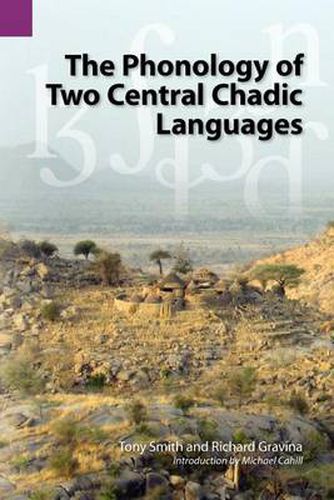Readings Newsletter
Become a Readings Member to make your shopping experience even easier.
Sign in or sign up for free!
You’re not far away from qualifying for FREE standard shipping within Australia
You’ve qualified for FREE standard shipping within Australia
The cart is loading…






This title is printed to order. This book may have been self-published. If so, we cannot guarantee the quality of the content. In the main most books will have gone through the editing process however some may not. We therefore suggest that you be aware of this before ordering this book. If in doubt check either the author or publisher’s details as we are unable to accept any returns unless they are faulty. Please contact us if you have any questions.
These two phonologies of the Chadic languages Muyang and Mbuko present typologically unusual data, the bulk of which is found in the vowel systems. Prosodies of labialization and palatalization can span entire words, affecting both vowels and consonants. Morphemes are of three types: neutral, labialized, and palatalized. At a deep level, these languages have only one or two basic vowels; all other vowel qualities result from the interplay of other factors. The labialization and palatalization prosodies do not operate identically, but may co-occur in Muyang, and possibly in Mbuko. The consonantal and tonal systems also have points of interest. Both Muyang and Mbuko have lateral fricatives, implosive stops and prenasalized voiced stops. Both have three tone levels but no contour tones or downstep. Voiced obstruents and voiced fricatives in Muyang and Mbuko are tonal depressors. These phonologies are written in a broadly generative rule-based framework, but theorists from various persuasions will find much of interest, including Muyang labialization patterns related to adjacency and consonant/prosody/vowel interactions, Mbuko tones and adjacency, and a Muyang []cor] autosegment causative morpheme. The works in this volume are the result of years of intensive contact with the speakers of Muyang and Mbuko by the authors.
$9.00 standard shipping within Australia
FREE standard shipping within Australia for orders over $100.00
Express & International shipping calculated at checkout
This title is printed to order. This book may have been self-published. If so, we cannot guarantee the quality of the content. In the main most books will have gone through the editing process however some may not. We therefore suggest that you be aware of this before ordering this book. If in doubt check either the author or publisher’s details as we are unable to accept any returns unless they are faulty. Please contact us if you have any questions.
These two phonologies of the Chadic languages Muyang and Mbuko present typologically unusual data, the bulk of which is found in the vowel systems. Prosodies of labialization and palatalization can span entire words, affecting both vowels and consonants. Morphemes are of three types: neutral, labialized, and palatalized. At a deep level, these languages have only one or two basic vowels; all other vowel qualities result from the interplay of other factors. The labialization and palatalization prosodies do not operate identically, but may co-occur in Muyang, and possibly in Mbuko. The consonantal and tonal systems also have points of interest. Both Muyang and Mbuko have lateral fricatives, implosive stops and prenasalized voiced stops. Both have three tone levels but no contour tones or downstep. Voiced obstruents and voiced fricatives in Muyang and Mbuko are tonal depressors. These phonologies are written in a broadly generative rule-based framework, but theorists from various persuasions will find much of interest, including Muyang labialization patterns related to adjacency and consonant/prosody/vowel interactions, Mbuko tones and adjacency, and a Muyang []cor] autosegment causative morpheme. The works in this volume are the result of years of intensive contact with the speakers of Muyang and Mbuko by the authors.